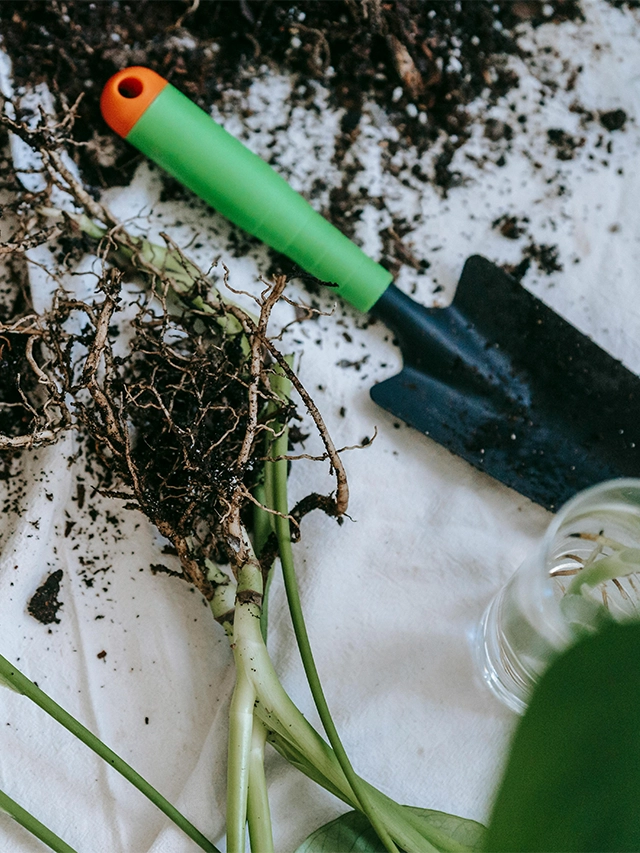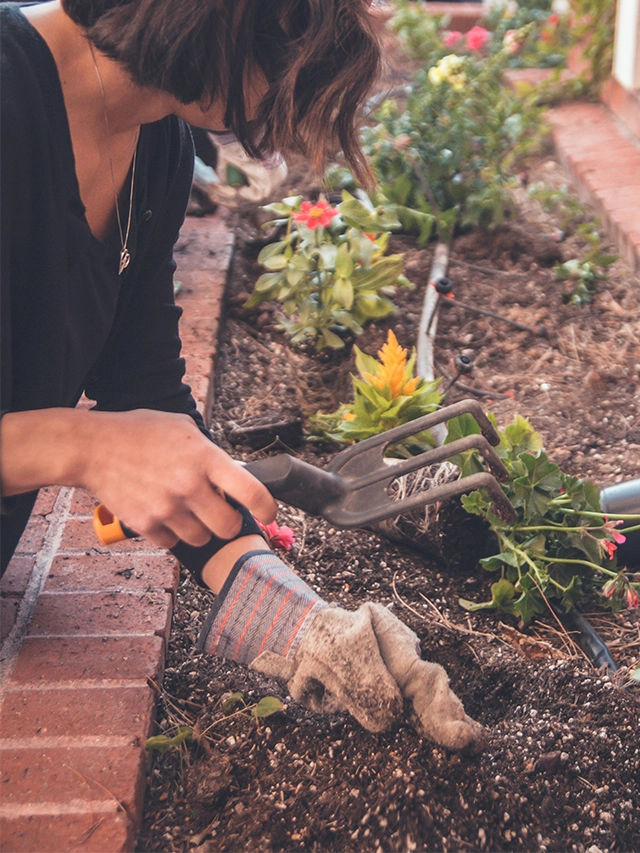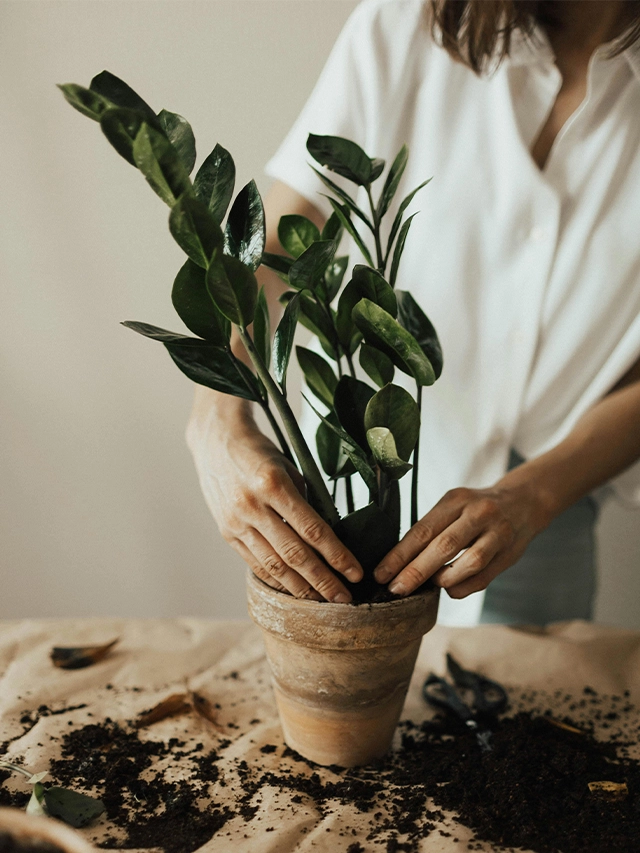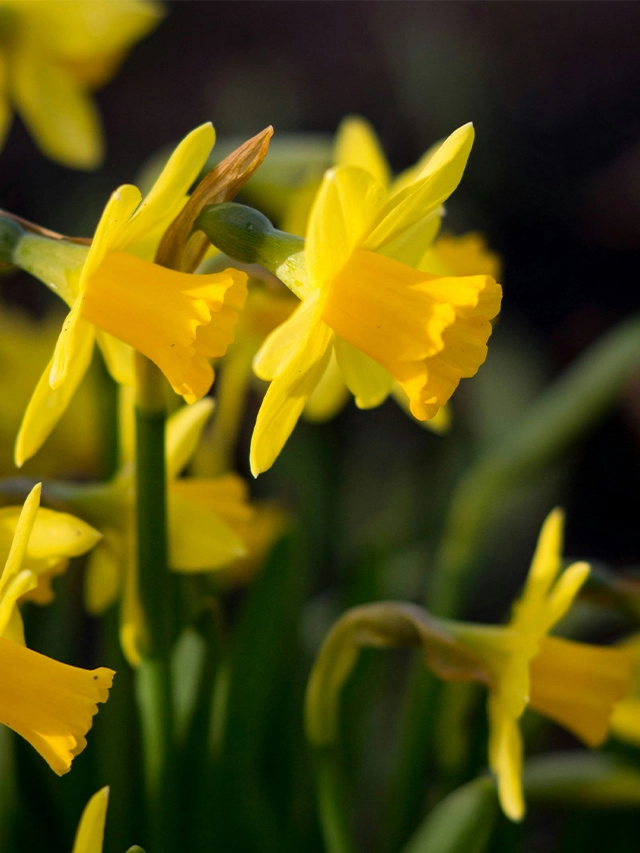Last Updated on February 16, 2025
Spring is finally here, and it’s time to roll up our sleeves and give our gardens a fresh, new look with yellow spring flowers. After months of winter slumber, gardens can look dull and lifeless, but with a little effort and creativity, we can breathe new life into them by planting yellow spring flowers. In this blog, we’ll cover some tips and tricks to help you revitalize your garden this spring. From planting yellow spring flowers and shrubs to adding interesting decorations featuring yellow spring flowers, there’s something here for everyone. Whether you choose daffodils, tulips, or other yellow spring flowers, these bright blooms will instantly lift your garden’s appearance. So let’s dive in and explore the best ways to incorporate yellow spring flowers into your outdoor space!
- Yellow Spring Flowers: Plan Your Garden Layout
- Clear Out the Old
- Improve Your Soil
- Choose the Right Plants
- Plant in Stages
- Add Decorative Elements
- Incorporate Water Features
- Attract Pollinators
- Mulch and Weed Control
- Maintain Your Garden
- Expand Your Gardening Knowledge
- Involve the Family
- Create Garden Zones
- Embrace Vertical Gardening
- Experiment with Container Gardening
- Integrate Edible Landscaping
Yellow Spring Flowers: Plan Your Garden Layout
Before getting your hands dirty, take some time to plan your garden layout. Consider the space you have available, the types of plants you want to grow, and the overall look you’re aiming for. Don’t forget to account for plants that will grow in size, like these boxwood shrubs, which can serve as a natural border or backdrop for your garden. Planning ahead will save you time and effort in the long run and will help ensure that your garden thrives.
Clear Out the Old
One of the first steps to revitalizing your garden is to clear out any dead plants, leaves, and debris that may have accumulated during the winter. This will not only make your garden look cleaner and more inviting but will also prevent the growth of weeds and diseases. Rake up leaves, prune dead branches, and remove any old mulch to give your garden a fresh start.
Improve Your Soil

Healthy soil is essential for a thriving garden, so it’s important to give it some attention in the spring. Start by testing the pH level of your soil to determine if any adjustments are needed. Most plants prefer a pH level between 6.0 and 7.0, but certain plants, like blueberries or azaleas, require more acidic soil. Amend your soil as needed with organic matter, like compost or aged manure, to improve its structure and fertility.
Choose the Right Plants
Selecting the right plants for your garden is essential to its success. Consider factors like the amount of sunlight your garden receives, your local climate, and the size of your space when choosing your plants. Be sure to include a mix of perennials, which come back year after year, and annuals, which provide a burst of color for one season. Native plants are also a great choice, as they are well-adapted to your area and often require less maintenance. You might want to consider beautiful green climbing plants, yellow spring flowers, dainty blue blossoms, or classic red roses – the sky’s the limit.
Plant in Stages
To keep your garden looking fresh and vibrant throughout the spring and summer, try planting in stages. Start by planting cool-season crops, like lettuce and peas, early in the spring. As the weather warms up, transition to warm-season plants like tomatoes and peppers. Finally, plant fall-blooming perennials and bulbs, like asters and tulips, to ensure your garden stays beautiful even as the temperatures drop.
Add Decorative Elements
Garden ornaments, such as statues, birdbaths, and wind chimes, can add a unique touch to your outdoor space. You can also create a charming focal point with a garden bench, trellis, or arbor, providing a cozy spot to relax and enjoy the fruits of your labor.
Incorporate Water Features
Water features can bring a sense of tranquility and beauty to your garden. Consider adding a small pond, waterfall, or fountain to create a soothing atmosphere and attract local wildlife like birds and butterflies. Not only do water features provide aesthetic appeal, but they can also create a diverse ecosystem that supports a wide range of plants and animals.
Attract Pollinators
Encouraging pollinators like bees, butterflies, and hummingbirds to visit your garden is essential for healthy plant growth and reproduction. To attract these beneficial creatures, choose plants that produce nectar-rich flowers in a variety of colors and shapes. Some popular pollinator-friendly plants include lavender, coneflowers, and bee balm.
Mulch and Weed Control
Applying a layer of mulch to your garden beds is another crucial step to revitalize your garden this spring. Mulch helps to retain moisture, regulate soil temperature, and suppress weed growth. Organic mulches, such as shredded bark or pine needles, can also improve soil quality as they decompose over time. Be diligent in removing weeds as they appear, as they compete with your plants for nutrients and water.
Maintain Your Garden

Regular maintenance is key to keeping your garden looking its best throughout the season. Routinely water your plants and any of the beautiful yellow spring flowers that are popping up around this time of year, ensuring they receive the appropriate amount based on their specific needs. Deadhead flowers promote new growth and extend the blooming period. Additionally, applying a balanced fertilizer can encourage healthy growth and boost the overall appearance of your garden.
Expand Your Gardening Knowledge
Consider expanding your gardening knowledge by attending workshops, joining local gardening clubs, or subscribing to gardening magazines and websites. By doing so, you’ll stay informed about the latest gardening trends, techniques, and plant varieties, allowing you to continually improve and adapt your garden over time.
Involve the Family
Gardening can be a fun and rewarding activity for the whole family. Involving your children or other family members in the gardening process can not only help create lasting memories but also teach valuable life skills like responsibility, patience, and teamwork. Plus, having extra hands to help can make the task of revitalizing your garden that much more manageable.
Create Garden Zones
One way to revitalize your garden this spring is by creating distinct garden zones or “rooms.” These zones can serve different purposes, such as relaxation, play, or food production. To achieve this, use a mix of plants, hardscaping, and decorative elements to define each area. For example, create a cozy seating area with a pergola and a fire pit, or build raised beds for growing vegetables and herbs. By designing specific zones, you can create a more functional and visually appealing garden that caters to your unique needs and interests.
Embrace Vertical Gardening
Vertical gardening is an excellent solution for those with limited space or who want to add visual interest to their garden. By growing plants on trellises, fences, or walls, you can maximize your garden space and introduce an extra layer of depth and dimension. Vertical gardening is ideal for climbers like clematis, morning glories, and climbing roses. You can also grow edible plants like beans, peas, and tomatoes using vertical supports.
Experiment with Container Gardening

Containers allow you to grow plants that might not be suited to your garden’s soil or climate, as well as add pops of color and interest to patios, decks, or entryways. You can grow a wide range of red, purple, pink and yellow spring flowers in containers, just do your research and enjoy the colors! Choose a variety of container sizes and materials, such as terracotta, wood, or metal, to create unique and eye-catching displays. Don’t forget to ensure proper drainage and use a high-quality potting mix for best results.
Integrate Edible Landscaping
Incorporating edible plants into your landscape design is a practical and attractive way to revitalize your garden with yellow spring flowers. Edible landscaping involves using fruit trees, berry bushes, and vegetable plants as design elements, rather than restricting them to a separate vegetable garden. For instance, you can use fruit trees as focal points, create a colorful border with rainbow chard, or plant herbs in decorative pots surrounded by yellow spring flowers.
Edible landscaping adds interest to your garden while also providing you with fresh, homegrown produce to enjoy. Adding yellow spring flowers alongside your edible plants enhances the beauty of your space while attracting pollinators.
By incorporating these additional tips and techniques, you can further revitalize your garden this spring, using beautiful yellow spring flowers to transform it into a vibrant and inviting space to enjoy throughout the season. Whether you plant them along pathways, in garden beds, or in containers, yellow spring flowers bring warmth and brightness to your outdoor oasis. Remember, the key to a successful garden is a combination of careful planning, diligent maintenance, and a willingness to learn and adapt—with yellow spring flowers adding the perfect finishing touch.
Benefits of Peptides: The Ultimate Guide to Buying High-Quality Supplements at Competitive Prices
Peptides are short chains of amino acids, that act as fundamental building blocks of proteins…
Steal These 7 Wellness Trends to Crush Your 2025 Goals
2025 is upon us. Forget boring routines—2025 is all about reinventing wellness trends to fit…
What Research Shows on Food Dyes: Red Dye No. 3 Is Banned. Will the FDA Take Action on More Food Colorings?
In a significant move, the U.S. Food and Drug Administration (FDA) has banned the use…
How To Take Care Of Yourself After Retirement
Many of us spend our entire working life dreaming of retirement, most precisely our life…
What plant has yellow flowers in early spring?
Forsythia shrubs, scientifically known as Forsythia spp., are cultivated for their vibrant yellow blossoms that emerge during the beginning of spring. These non-indigenous plants are highly favored for their ability to thrive in various conditions, making them a popular choice among gardeners. While spring is the primary season when Forsythia exhibits its captivating allure, certain cultivars also boast a delightful yellow foliage during the autumn months.
What is the name of the yellow spring flower?
Forsythias are known for their low-maintenance nature, although they do require some care. Following a prolonged and dull winter, gardeners eagerly anticipate the arrival of spring. A definitive indication that spring has indeed dawned is the emergence of vibrant yellow blooms on the forsythia shrubs.
What flower is the queen of spring?
The Hellebore.
- Successible Life Staffhttps://successiblelife.com/author/successible-life-staff/
- Successible Life Staffhttps://successiblelife.com/author/successible-life-staff/
- Successible Life Staffhttps://successiblelife.com/author/successible-life-staff/
- Successible Life Staffhttps://successiblelife.com/author/successible-life-staff/





